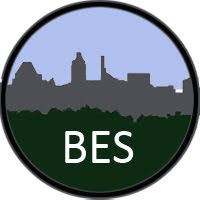Baltimore Watershed Featured in Chesapeake Quarterly
The activity in the West Baltimore storm drain watershed number 263 continues to attract attention. This unusual combination of research, community engagement, and partnership with city agencies is aimed at improving quality of life and of environment in this 930 acre amalgamation of some 11 neighborhoods. The work was featured in the June 2008 Chesapeake Quarterly.
“Renewing an Urban Watershed” is the subtitle of Chesapeake Quarterly, volume 7, number 2. This issue of the journal, published by the Maryland Sea Grant College, highlights the joint work of BES, the Baltimore City Department of Public Works, and the Parks & People Foundation in the 930 acre (376 ha) storm drain watershed. This area west of downtown in Baltimore City is characterized by low vegetation cover, highly polluted storm drainage water, high levels of housing abandonment, and lack of economic opportunity. The Parks & People Foundation has long aided neighborhoods in the area by promoting community greening, community organization, and after school educational activities. BES is a partner in the educational activities here. More recently, the Baltimore City DPW has begun an effort to coordinate the activities of various city agencies in improving the environment in the rich mixture of neighborhoods that overlap or are contained entirely within Watershed 263.
BES is helping the DPW to conduct research on the quality of water draining two subwatersheds in this area. Water flow, water chemistry (including pollutants such as phosphate, nitrate, and organic carbon), reduction of impervious surface, increasing vegetation cover, adding best management practices for storm water, and targeting improvement of sources of pollution have been some of the activities conducted by the city, private, and research partners. The nature of the work, and some of the researchers, managers, and community leaders involved, are all described in very readable articles and side bars in the issue. There are also engaging photographs accompanying the text. It makes interesting reading, and I recommend it to those interested in how BES links to community and policy concerns. Click on http://www.mdsg.umd.edu/CQ/V07N2/ to read the articles.


